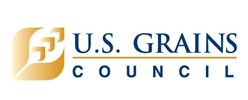 A new DuPont Pioneer study conducted across 12 Corn Belt states demonstrates that growers may be leaving profit potential in the field each season if they don’t carefully manage phosphorus (P) and potassium (K) levels. The research confirms P and K deficiencies can make a real difference in both yield potential and grain quality and that developing a fertility management plan is essential.
A new DuPont Pioneer study conducted across 12 Corn Belt states demonstrates that growers may be leaving profit potential in the field each season if they don’t carefully manage phosphorus (P) and potassium (K) levels. The research confirms P and K deficiencies can make a real difference in both yield potential and grain quality and that developing a fertility management plan is essential.
“Growers often think first of nitrogen management when they consider soil fertility decisions because of its important influence on corn production,” said Andy Heggenstaller, DuPont Pioneer agronomy research manager. “However, deficiencies in P and K can inhibit yields over the long term in both corn and soybeans, limiting profit potential over time.”
Comprised of more than 22,000 soil samples, the study demonstrated that P and K were deficient in a significant number of tested fields. These negative balances may be further exacerbated by the higher nutrient requirements of today’s more productive hybrids and varieties.
Many states have modified recommendations for P and K fertility in recent years, and growers need to make sure their programs are keeping pace. Potassium, which is vital for water regulation and enzyme activation, also promotes stalk strength and late-season standability. Phosphorus deficiency can cause issues with early root and shoot growth and can reduce tolerance to drought, disease and temperature stresses.
“There are many things growers can do to ensure that their crops are getting enough P and K each season,” Heggenstaller said. “We encourage growers to make sure they conduct soil testing at the right frequency and use the most current soil fertility standards. We also ask growers to consider using a service like Encirca℠ Fertility service to help ensure precise, efficient fertility management to support maximum productivity.”












